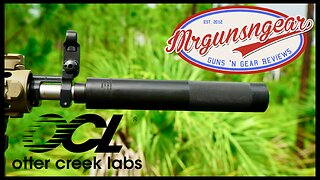Premium Only Content

I spotted my favorite sports car!
Get Dodge Viper merchandise on Amazon here... hhttps://geni.us/jdUFhBV
https://www.amazon.com/shop/petervonpanda
Join this channel to help me bring you more vids...
https://www.youtube.com/channel/UCS-ix9RRO7OJdspbgaGOFiA/join
Join the free von Panda group here... https://panda-research-institute.mn.co
Get Peter von Panda gear here... https://petervonpanda.storenvy.com/
Instagram... https://www.instagram.com/petervonpanda/
As an Amazon Associate I earn from qualifying purchases.
Get Peter von Panda apparel here... https://petervonpanda.storenvy.com
The Dodge Viper is a sports car manufactured by Dodge (SRT for 2013 and 2014), a division of American car manufacturer FCA US LLC from 1991 through 2017, having taken a brief hiatus from 2010–2013. Production of the two-seat sports car began at New Mack Assembly Plant in 1991 and moved to Conner Avenue Assembly Plant in October 1995.
Although Chrysler considered ending production because of serious financial problems,[1][2] on September 14, 2010, the then chief executive Sergio Marchionne announced and previewed a new model of the Viper for 2012.[3] In 2014, the Viper was named number 10 on the "Most American Cars" list, meaning 75% or more of its parts are manufactured in the U.S.[4]
The first prototype was tested in January 1989. It debuted in 1991 with two pre-production models as the pace car for the Indianapolis 500 when Dodge was forced to substitute it in place of the Japanese-built Dodge Stealth because of complaints from the United Auto Workers, and went on sale in January 1992 as the RT/10 Roadster.
Lamborghini (then owned by Chrysler Corporation) helped with the design of the V10 engine for the Viper, which was based on the Chrysler's LA V8 engine. A major contributor to the Viper since the beginning was Dick Winkles, the chief power engineer, who had spent time in Italy.[6]
Originally engineered to be a performance car, the Viper contained no exterior-mounted door handles or key cylinders and no air conditioning (however, this was added as an option in later models, and climate controls featured a "snowflake" icon, which indicated a potential setting for the A/C). The roof was made from canvas, and the windows were made from vinyl and used zippers to open and close, much like the Jeep Wrangler. However, the Viper was still equipped with some domestic features, including manually-adjustable sport leather-trimmed bucket seats with lumbar support, an AM-FM stereo cassette player with clock and high fidelity sound system, and interior carpeting. Aluminium alloy wheels were larger in diameter due to the larger brakes. A lightweight fiberglass hard roof option on later models was also available to cover the canvas soft roof, and was shipped with each new car. There were also no airbags, in the interest of weight reduction. Adjustable performance suspension was also an available option for most Vipers.
The engine weighs 711 lb (323 kg) and generates a maximum power output of 400 hp (406 PS; 298 kW) at 4,600 rpm and 465 lb⋅ft (630 N⋅m) at 3,600 rpm, and due to the long-gearing allowed by the engine, provides fuel economy at a United States Environmental Protection Agency-rated 12 mpg‑US (20 L/100 km; 14 mpg‑imp) in the city and 20 mpg‑US (12 L/100 km; 24 mpg‑imp) on the highway.[7] The body is a tubular steel frame with resin transfer molding (RTM) fiberglass panels. The car has a curb weight of 3,284 lb (1,490 kg) and lacks modern driver aids such as traction control and anti-lock brakes. The SR I can accelerate from 0–60 mph (0–97 km/h) in 4.2 seconds, 0–100 mph (0–161 km/h) in 9.2 seconds, can complete the 1⁄4 mile (402 m) in 12.6 seconds at the speed of 113.8 mph (183.1 km/h) and has a maximum speed of approximately 165 mph (266 km/h).[8][9] Its large tires allow the car to average close to one lateral g in corners, placing it among the elite cars of its day. However, the car proves tricky to drive at high speeds, particularly for the unskilled drivers.
-
 8:50
8:50
Peter von Panda
1 year agoV-Line Under Desk Safe Has A Cool Lock
1.28K1 -
 LIVE
LIVE
MadHouseRetro
3 hours agoMadhouse Presents : Triple Warbricks Model build! Sponsored by Warbricks USA!!!!
99 watching -
 3:39:49
3:39:49
TheItalianCEO
4 hours agoRumble is for pirates - Sea of Thieves top 250 in the world
27.3K1 -
 10:29
10:29
Mrgunsngear
2 days ago $8.69 earnedOtter Creek OCM5: The Quietest MK12 Silencer To Date 🇺🇸
63.3K21 -
 40:30
40:30
Kitco NEWS
1 day ago2030 Commodity Surge: What to Buy Before Prices Explode | Adam Rozencwajg
23.2K4 -
 4:13:02
4:13:02
EXPBLESS
7 hours agoBig Robots Shooting Eachother Seems Pretty Fun - Steel Hunter's LIVE
21.3K2 -
 25:29
25:29
The Dr. Ardis Show
2 days ago $4.68 earnedThe Dr. Ardis Show | Economic Update with Kirk Elliot | Episode 05.30.2025
21.2K6 -
 10:27
10:27
Professor Gerdes Explains 🇺🇦
1 day agoEx CIA Director: This Nation is Putin's NEXT Target Urgent Warning
17K25 -
 3:50:32
3:50:32
Biscotti-B23
5 hours ago $0.42 earned🔴 LIVE SURPRISE BETA 🏆 CUSTOM MATCHES & ELITE RANK GRIND ⚽ REMATCH
13.4K -
 10:05
10:05
ARFCOM News
2 days ago $0.77 earnedCan They Track Your Prints? | CtrlPew BANNED | Short Barrels LEGALIZED | Corrupt Sheriff Sold Badges
9.23K13